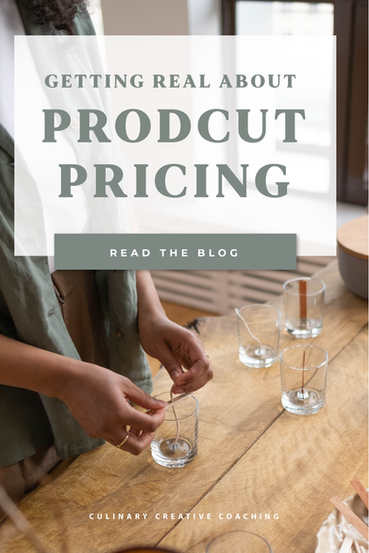Getting Real About Product Pricing
- Crystal Golden
- Jun 10, 2022
- 4 min read
Updated: Jun 15, 2022

You have a product, but do you know what it is worth?
Setting your pricing scale can be one of the most challenging things you do in your new businesses. Often forgotten about, or ignored. Setting your pricing is fundamental to how your product and business is going to succeed. Set your price to low and you wont make any money, set it to high and you may not sell any product.
What to consider when setting your pricing scale.
While there are countless things that play into setting your pricing; from market position to buyer demographics. I suggest most first time businesses start with the basics, what does it cost to make your product, how much do you need to make per item to grow your business, and how does this align with the long-term growth goals you are trying to achieve.
Your product cannot go to market without pricing, while we can't cover every detail in a blog post though we we get significantly more detailed in my Culinary Creative Coaching, this is an excellent place to start!
How much does it cost to make a single unit?
When figuring out how much it costs to make a single unit of your product, you need to get really serious and really honest on what it takes. If you skew the numbers now you are going to set yourself up for a huge headache down the line. Calculating a single unit cost can be challenging, because nothing in production is made one unit at a time. But this single unit cost will allow you to ensure you are making the money you need to keep your business growing.
This is where most business owners fall into the trap of how low can you go. They don't include their own hours worked, rental space, marketing or a myriad of other expenses when calculating the unit price of their products. I would rather you go high and ensure you are making your money, then go low so the numbers look better on the spreadsheet.
If you run your numbers and find that your product is way too expensive for your target market, it is cost intensive in time, or not scalable you need to make adjustments before going to market. This is the time to find and correct areas of weakness in your production and pricing don't wait until you have an order to discover you are loosing money.
Start Calculating
The list is a starting point of of expenses to consider when calculating what goes into making your product. While the product and production list varies from company to company and product to product here this is a universal list of things you should include when doing your pricing breakout.
Materials - What is the product made out of, and how much does each ingredient cost. Include everything! Even the pinch of salt costs money, make sure you count it.
Time : Making - How much time does it take to make a single unit of your product. Also consider how long does it take to prep your space and to clean up at the end of the day, how many people do you need on site to have a successful shift and so on.
Packaging - What is the cost of your label and packaging. Whether you are going grass routes with entry level packaging or going for a luxury line with something more lux you need to include everything from the food safe bag and box to the tamper seal included in your packaging cost.
Time Packaging - How long does it take to get your raw product into its packaging and ready for sale. While a jar covered in stickers looks great, it takes time to apply every single sticker and make sure it looks perfect and that time effects the bottom line of your product.
Shipping - What does it cost to move a single unit to your point of sale. If you are doing direct to consumer sales via an online ecommerce site what is you shipping fee to mail your product to the customer. Don't forget to include the cost of your shipping box, packing materials and shipping label, even the ink! If you are planning to sell by the pallet, include the cost to palletize your product including your wood pallet, plastic wrap and freight service.
Monthly Reoccurring - Things like your business insurance, kitchen rent, equipment rentals, website hosting, marketing, and utilities are all business expenses and should be calculated into the cost of your product. At least when you have a limited SKU count, this will change as the number of products you create increases and has a lower impact on individual item cost.
It is easy to see how little expenses that fall through the cracks turns into a big problem when going to market. If you leave out any one of these major categories you could find your self struggling to turn a profit. By taking a realistic look at what it takes to create your product you can get a good idea of how much you need to charge for your product but also look at how your product can scale.














